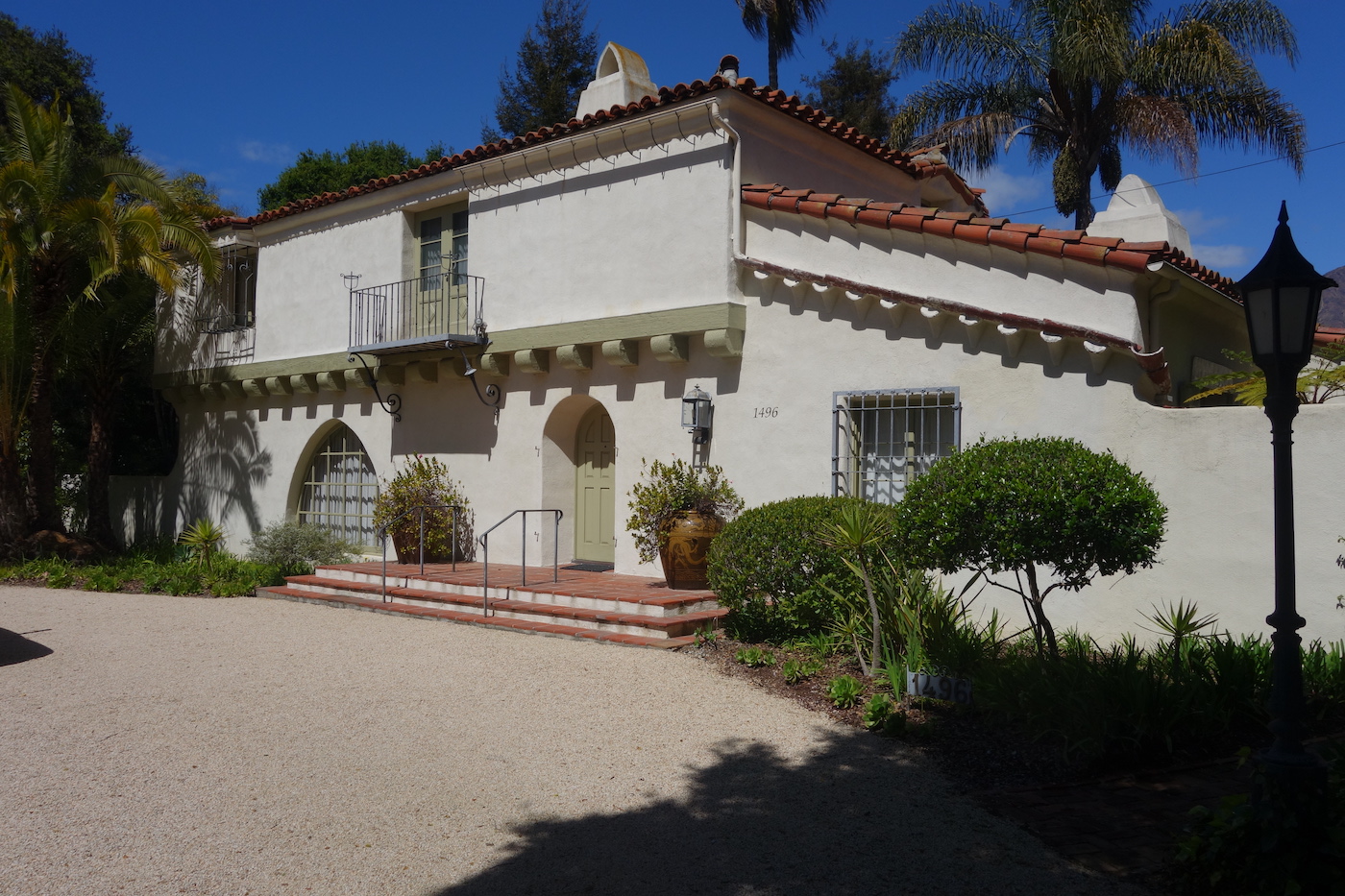Pearl Chase Society’s Historic Homes Tour

The Pearl Chase Society is busy putting the final touches on its 17th annual Historic Homes Tour, which will take place on Sunday, May 20, in Montecito’s Hedgerow District. According to organizers, the “Hidden in the Hedgerow” tour will showcase the diversity of homes designed over three decades in the historic neighborhood, which was recently challenged by the forces of nature. The tour will bring participants inside five homes that marked the dynamic early years of the 20th century.
“No tour of Santa Barbara area historic homes would be complete without designs by noteworthy architects and their signature styles,” says co-organizer Marcella Simmons. “But our event this year acknowledges the reality that custom homes are designed through the collaboration of both architect and client, with the resulting balance sometimes displaying architectural genius in unexpected styles.” This year’s homes are notable for their architectural designs, exceptional craftsmanship, and sustained livability, Simmons added.
A classic Spanish Colonial Revival home designed in 1929 by well-regarded architect Joseph J. Plunkett has been little changed from the 1930s. The original owners lived in the home for 50 years, and it was a favorite of Miss Pearl Chase even before the 1925 earthquake that set the stage for rebuilding the city with a Spanish flair. The Andalusian-style home sits on what was once a citrus orchard; the property was owned by actor Alex Nicol in the 1990s, and because it was designed by Plunkett, has several similar features to the Santa Barbara airport terminal.
Early country living in Montecito is represented by the late-1910s Prairie Rustic-style home on San Leandro Lane, with its low-pitched, hipped roofline, central fireplace, and deep eave overhangs that suggest a local adaptation of the Midwestern prairie style. “Visitors will appreciate the changes that have made this home graciously livable for more than a century, while keeping original details such as windows and a sliding pocket-style door,” Simmons said. The Coast Redwood in the front garden is said to date from the house’s beginnings, and the current owners have brought this once-failing tree back to magnificent life with extreme care.
A late Craftsman home also on San Leandro was built in the early 1920s, and was owned originally by local architect Handy L. Wass. It’s unclear whether Wass also designed the home; those details are lost to history. A subsequent owner, Harold Chase, the brother of Pearl Chase, was the developer of Hope Ranch. The comfortable, large cottage-style home features a coved foyer ceiling, striking living room, and formal dining room. The kitchen retains much of the original cabinetry, and the sweeping rear veranda features a discovered portion of original paradise floral wallpaper in situ.
A Mediterranean estate on San Leandro Lane, called Boscobel, was visited by the Garden Club of America in 1926 and has charmed visitors ever since. Truly hidden in the hedgerow, the home includes elements of symmetrical East Coast Federalism, while incorporating the stucco, clay tile roofs, and wrought-iron balconies of Mediterranean and Spanish Colonial Revival styles, according to tour organizers. The gardens, while reduced from the original estate, feature a century-old Eugenia hedge arch at the north end.
Tour guests will be treated to refreshments in the garden at Casa Paz Del Mar, built in the 1920s and designed by George Washington Smith in a German Domestic architectural style. This home style is uncommon in Santa Barbara but was popular in 1910s Europe, where the original owners would have admired it. The home was originally designed to face the ocean, and over the years the front entrance has shifted to the opposite side. It is an excellent example of the collaboration between architect and owner, and features many details seldom seen in Smith’s later work.
“This year’s tour is remarkable, and we are so grateful to the homeowners who have graciously opened their treasured homes to us after all that has happened in Montecito since December. It is truly a testament to the spirit of our community, and we look forward to sharing this very special neighborhood,” says Simmons, who added that a portion of the proceeds will go toward restoration efforts in Montecito.
The PCS is currently monitoring other areas of Montecito that were affected by the January 9 debris flow, including Riven Rock, where several historic bridges were destroyed or damaged. The Canby House on East Valley Road, which was on the Historic Homes Tour in 2014, was affected by the debris flow, but the house appears to be intact. The relocation of a historic Moody Cottage from 170 Middle Road to a new site on Hot Springs Road appears to be infeasible now, being in the flood plain. A new location is being sought.
The Historic Homes Tour is open to the public from 11 am to 4 pm on Sunday, May 20. Tour tickets are $80 for PCS members, $85 for non-members, and $110 for a ticket and first-time-only membership.
To purchase tickets, visit www.PearlChaseSociety.org for a link to online sales, or mail a check to the Pearl Chase Society Historic Homes Tour, 2735 Miradero Drive, Santa Barbara, CA 93105. For information, call 961-3938. Advance reservations required.







